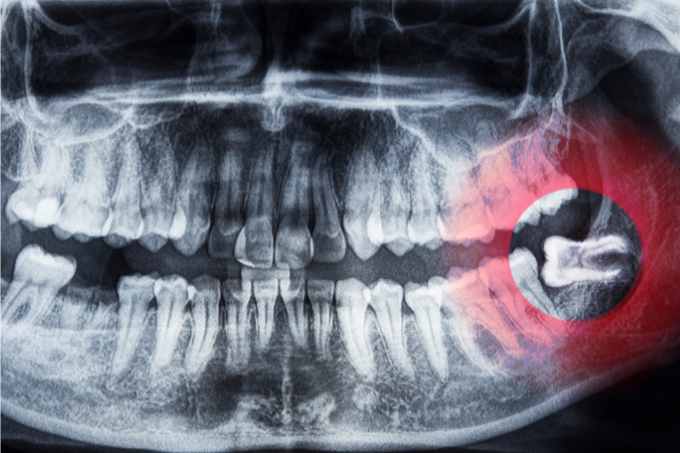Wisdom tooth extraction is a significant dental milestone that many New Zealanders face in their late teens or early adulthood. At Hamilton Dental, our experienced team is committed to ensuring your wisdom teeth removal process is safe, comfortable, and supported with evidence-driven post-operative care.
In this comprehensive guide, we’ll demystify every stage of the procedure and recovery, equipping you with everything you need to achieve the best outcome.
What Are Wisdom Teeth & Why Are They Removed?

Wisdom teeth, also known as third molars, are the last set of teeth to erupt, typically between ages 17 and 25. In some people, these teeth emerge without complications. However, for many, issues like impacted wisdom teeth (where the tooth is trapped under the gum or in the bone), crowding, or infection lead dentists to recommend extraction.
Impacted or partially erupted wisdom teeth can increase the risk for problems such as tooth decay and pericoronitis (gum inflammation over a partially erupted tooth), sometimes resulting in repeated infections, pain, cyst formation, or damage to neighbouring teeth.
For more information about wisdom teeth, read our guide, “Everything You Need to Know About Wisdom Teeth”.
Procedure of Wisdom Teeth Removal
Initial Consultation
- Full assessment, including X-rays, to evaluate the position and health of your wisdom teeth.
- Discussion about the best extraction approach – simple removal if the tooth is erupted, or surgical extraction if it is impacted or under the gum.
The Surgical Process
Depending on your situation, removal can happen under local anaesthesia, sedation, or general anaesthesia. Here’s what typically happens:
- Anaesthesia administered: Local, sedation, or general, based on complexity and your preference.
- Incision: Gum tissue is gently incised to expose the tooth and surrounding bone.
- Bone removal: Sometimes, a small portion of bone must be removed to access the tooth.
- Sectioning the tooth: For particularly challenging cases, the tooth may be divided into sections and removed piece by piece.
- Extraction: The tooth is carefully extracted using elevators and forceps.
- Site cleaning: The area is cleared of debris.
- Stitching: Stitches (often dissolvable) are placed to promote healing, though sometimes they aren’t needed.
- Blood clot formation: Gauze is placed over the site to encourage clotting, a key part of the healing process.
The entire procedure usually takes under an hour for straightforward cases, but more complex extractions can take longer.
Read more: Top 5 Signs Your Wisdom Teeth Need to be Removed

Wisdom Tooth Extraction Recovery: Timeline & Healing Phases
Immediate Post-Op (First 24 hours)
- Blood clots form in the extraction site.
- Expect mild bleeding and swelling as the anaesthetic wears off.
- Pain peaks around 6–12 hours post-surgery.
Days 2–3
- Swelling in the cheeks and jaw is at its peak, then begins to subside.
- Bruising may appear.
- It’s common to have some jaw stiffness, mild discomfort, and a bad taste in the mouth.
Days 4–7
- Swelling and bruising decrease.
- Jaw movement starts returning to normal.
- Dissolvable stitches may disappear around this point.
Week 2
- Most pain, swelling, and jaw stiffness resolve.
- By day 7–10, most people resume normal routines, although full socket closure can take several weeks to months.
Complete Healing
- Soft tissue: 2–3 weeks.
- Bone: Several months for full bone healing.
How Long Does It Take to Recover from Wisdom Teeth Removal Surgery?
Most patients can return to work, study, and daily tasks within 3–5 days after extraction, although full healing can take up to two weeks or longer for more challenging cases. Here’s what influences the wisdom teeth removal recovery time:
- Number of teeth removed
- Difficulty and extent of surgery
- Whether teeth were impacted
- Patient’s age and overall health
- Strict adherence to post-op care instructions
Statistically, complications like dry socket occur in about 25–30% of impacted wisdom tooth removals, underscoring the importance of following proper post-op protocols.
Wisdom Teeth Post Op Care & Recovery Tips

Comprehensive wisdom teeth post-op care is your greatest ally for a smooth and speedy recovery. Here are the essentials:
DO:
- Use gauze: Apply firm pressure with gauze to control bleeding.
- Apply ice: Use ice packs (20 minutes on/off) for 24–36 hours to reduce swelling.
- Take medications: Use prescribed or recommended pain relievers as directed.
- Rest extensively: Limit activity for at least 2–3 days; take naps and avoid strenuous movement.
- Eat soft foods: Favour soups, yoghurt, smoothies (no straws), and pureed options.
- Hydrate: Drink plenty of water.
- Oral hygiene: Gently brush teeth and start salt water rinses 24 hours post-surgery; rinse 5–6 times daily.
DON’T:
- Avoid dislodging the clot: Don’t smoke, spit forcefully, use straws, or rinse strenuously within the first 24 hours.
- Don’t touch the area: Keep fingers and tongue away from the socket.
- Avoid hard, spicy, or acidic foods: These can irritate the wound.
Special Recovery Tips:
- Keep your head elevated while resting/sleeping.
- Watch for signs of infection: Persistent or severe pain, swelling, or discharge – contact your dentist if these occur.
- Photobiomodulation: Low-level laser therapy for reduced swelling and pain (offered at some clinics, for select cases).
- Coconut water: Anecdotally, some find it aids hydration and healing.
Read more: Foods You Should Eat After Wisdom Teeth Removal
What to Expect After Wisdom Teeth Removal
- Bleeding: Common in the first few hours. Bite on gauze and change as needed.
- Swelling: Peaks days 2–3, resolves by week’s end.
- Pain: Usually manageable with painkillers, peaking in the first 12–24 hours.
- Bruising: May develop and fade in a week or so.
- Jaw stiffness: Common, especially with lower teeth.
- Sense changes: Temporary numbness or tingling in the lips, tongue, or cheeks.
- Bad breath or taste: Normal, resolves with healing.
- Possible mild fever on the first day.
What Other Practices Rarely Tell You
- Personalised Aftercare Plans: At Hamilton Dental, we tailor post-op care instructions to your lifestyle, recovery goals, and medical profile.
- Emphasis on Early Movement: Gentle jaw exercises are recommended (after day 2) to prevent long-term stiffness. These have been demonstrated to reduce recovery time.
- Nutrition for Healing: We advise on high-protein, vitamin-rich soft foods that support cellular healing.
- Evidence-Driven Antibiotic Use: Not all wisdom teeth cases need antibiotics. We only prescribe based on current risk factors and best-practice standards.
For more information or to book your wisdom teeth assessment, contact Hamilton Dental. Our team is happy to answer your questions and tailor a recovery protocol that supports your health and lifestyle.
Frequently Asked Questions (FAQ)
How long should I take off work or school?
Plan for 2–3 days off, longer if your job is physically demanding.
Is pain normal after surgery?
Yes. It should be well-controlled with standard pain relief, peaking in the first 12–24hr.
When can I eat ‘normal’ food again?
Start reintroducing firmer foods after 5–7 days, unless told otherwise.
What is a dry socket, and how do I prevent it?
A dry socket occurs when the protective blood clot is lost, exposing the bone, causing sharp pain and delayed healing. Avoid straws, smoking, and vigorous oral movements in the first 3–5 days.
Will stitches need removing?
Most are dissolvable and disappear in 7–10 days. Non-dissolvable stitches will be removed at a follow-up appointment.
When should I call my dentist?
If you have heavy bleeding, severe pain, pus, or persistent swelling or fever, contact us.
Can I brush my teeth after the procedure?
Yes, but avoid the extraction site and brush gently. Start salt water rinses the day after surgery.
How long until sockets fully heal?
While pain and swelling subside within two weeks, the gum socket may take a few months to completely close.
Site map
Services
Contact Us
T: 07 854 8905
E: info@thehdc.co.nz
3/111 Thomas Road,
Rototuna, Hamilton
copyright © 2025 Hamilton Dental Centre | Credit Terms | Web development by Digital Hothouse

